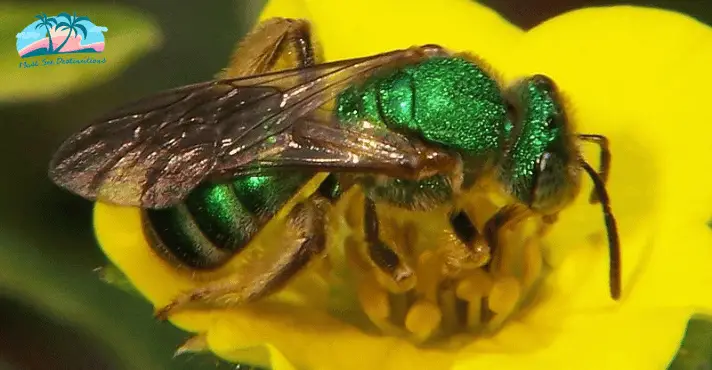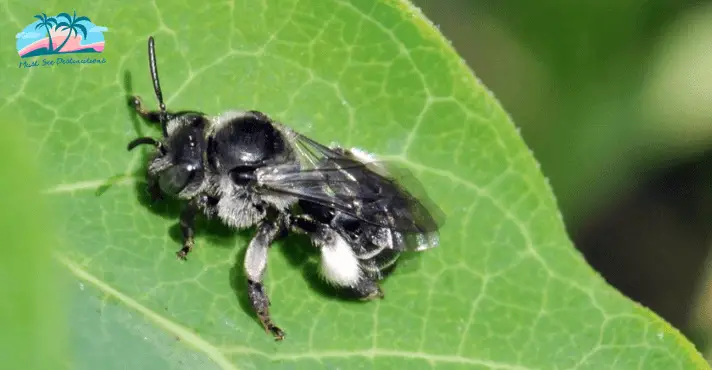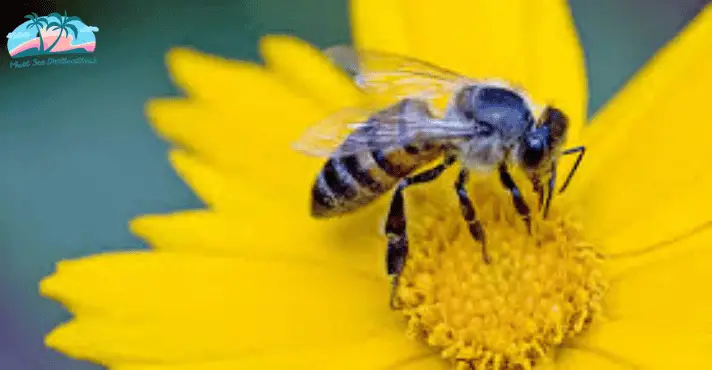The native Florida bees come in a wide range of sizes, hues and fuzziness. The fact that we frequently refer to them as “wild bees” does not indicate that they are aggressive or harmful. More than 300 different kinds of bees where help with crop pollination and the quality of environment.
Honey bee is the pollinator that needs most attention since it best encapsulates problems facing all pollinators in the state. Bee populations have been declining in recent years as a result of factors such as habitat loss, pesticide use and disease.
Florida has launched programs and efforts targeted at promoting conservation and enhancing habitat to protect bees and other pollinators.
Jump to:
Florida’s Bees Groups
Six main groups of Florida’s bees Andrenidae, Apidae, Colletidae, Halictidae, Megachilidae and Melittidae are incredibly diversified unlike non native honey bees.
Halictidae(Sweet Bees of Florida)

Many beautiful tiny sweat bees are so small that most people are unaware they are bees. Sweat bees are a diversified group of colorful microscopic bees in Florida. Apart from Apis (honey bee) species they are often more numerous than the majority of bees.
According to Michener (2007) halictid species can be solitary, communal, semi social or eusocial exhibiting the widest range of social behavior. One of the largest bee genera in the world the Halictidae family’s Lasioglossum exhibits a stunning variety of behaviors.
Megachilidae (The Leaf cutter & Mason Bees)
Leaf cutting bees are a unique species not just because of how they harvest the pollen but also because of how they construct their homes. Megachilidae leaf cutter bees can produce up to four generations of young each summer with the final generation spending the winter as larvae in the nest.
Number of cells in a nest can range from two to thirty depending on the amount of available space. Each cell contains a food ball made of pollen and nectar and is constructed from leaves and petals.
When the female places a single egg on this ball and closes the cage her parental responsibilities for that child are fulfilled.
Male bees don’t help build nests and pass away soon after mating with a female. Like many other insects, bees have four primary life stages: egg, larva, pupa and adult.
Andrenidae (Mining bees)

These ground nesting bees in Florida can occasionally be seen nesting in aggregations and are most frequently found on early spring flowering plants. Mining bees play an important role in pollination. Adults drink nectar (many are selective consumers of only a few plants) and feed nectar and pollen to their larvae.
They are “buzz pollinators” which trigger a flower to release pollen by creating a vibration. Apples and other fruit trees as several blueberry and orchid species are among the plants they prefer.
Mining bees were “The Bee” in blueberry growing areas until they were replaced by European honeybees which turned out to be a bad move in retrospect.
Colletidae (Plasterer bees)
These bees produce a silky cellophane that is waterproof and fungus resistant which they utilize to line and bond the walls of their nest cells. They apply this cellophane using their small forked tongues.
These bees are black in color with pale setae around the thorax and pale bands on the abdomen. They are similar to the size of a honey bee.
Colletid bees produce only one generation per year. Every spring the bees emerge. Each female excavates her own nest with no assistance from other bees.
Melittid Florida bees (Melittidae)

Melittidae is a tiny bee family with approximately 200 species divided into three subfamilies. The family has a restricted distribution with all documented species restricted to Africa and the northern temperate zone.
Most of the species in the family are oligolectic. They are specialist pollinators with a great affinity for a few genera or families of flowering plants.
Apidae(Bumbles, cuckoos, carpenters, long horned)
The Apidae family is another unique group of bees in Florida with over 80 species. Many of the more common bees such as honey bees are included in this group as well as carpenter bees and bumble bees.
Most people are familiar with bumble bees which have huge fuzzy bodies with black and yellow stripes. With their loud buzzing they are frequently heard before they are seen. Several bumble bee species can be found in Florida.
The Carpenter bee is another common bee among homeowners. In Florida there are two species of carpenter bees: Xylcopa virginica and X. micans. Carpenter bee females dig their nests in wood.
They bore into wood using their mandibles, not eating but discarding wood (often leaving a small pile of sawdust under the nest entrance). This family also includes several species of cuckoo bees.
These are found in the Triepeolus, Nomada, Epeolus and genera. They prey on the nests of other bees and behave similarly to cuckoo birds.
You May Also Like to Read These Articles:
Types of Florida Beach Birds
Millenia Park Orlando: Luxury Living in Vibrant Community Near Attractions
Colonial Town Park: Where History and Nature Meets Modern Living
Discover Wadeview Park Orlando: An Affordable Community
Bottom Line
All in all Florida is home to a wide variety of native and non native bee species. Honeybees, bumblebees, carpenter bees and sweat bees are some of the most prevalent bee species in Florida. Bees pollinate crops and plants and are critical to the ecosystem’s balance in Florida and beyond. For more amazing content about Florida birds must visit the site.
